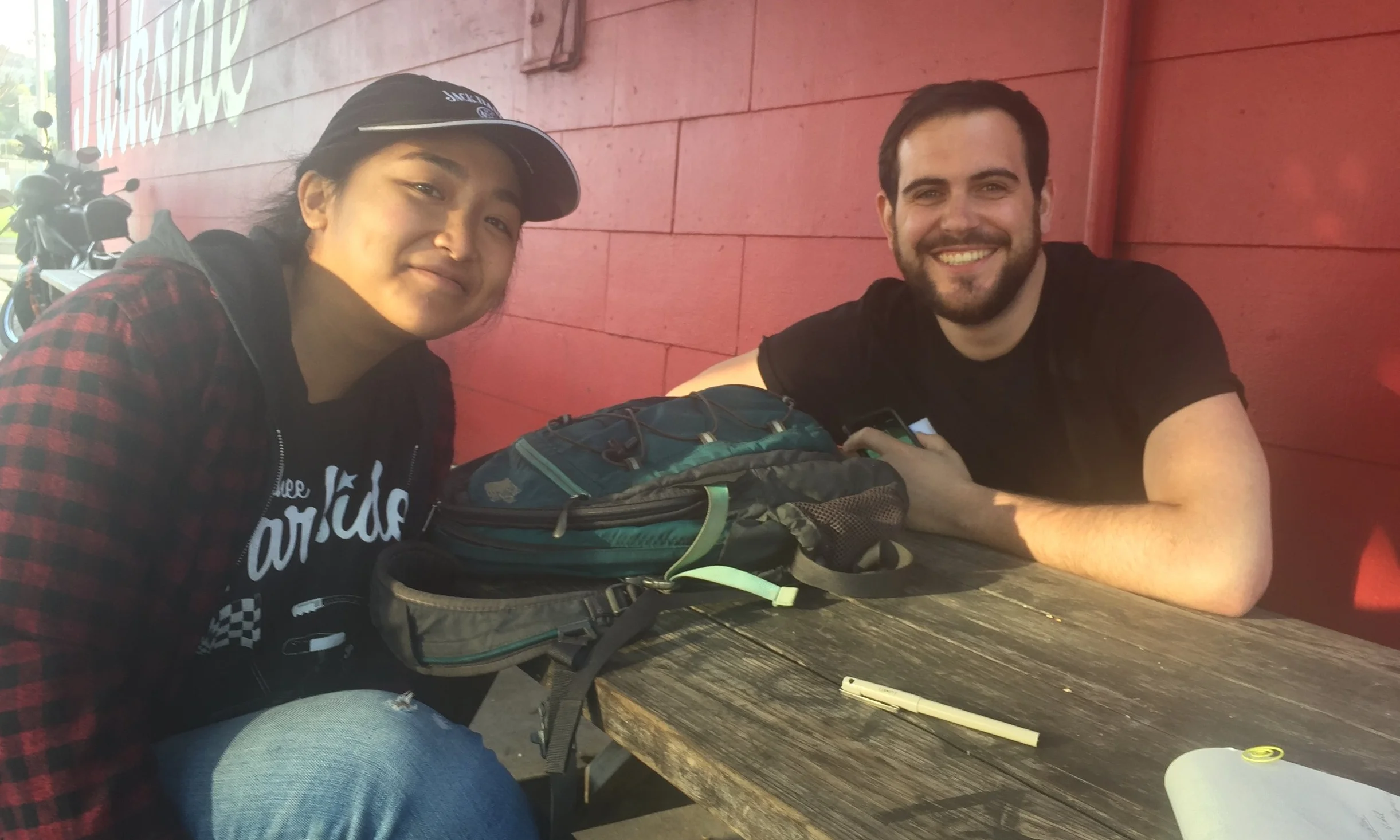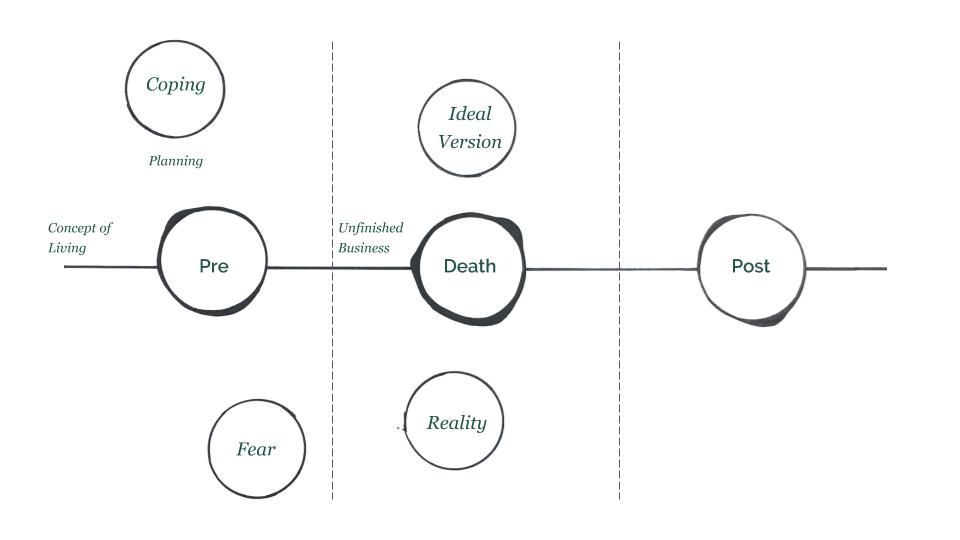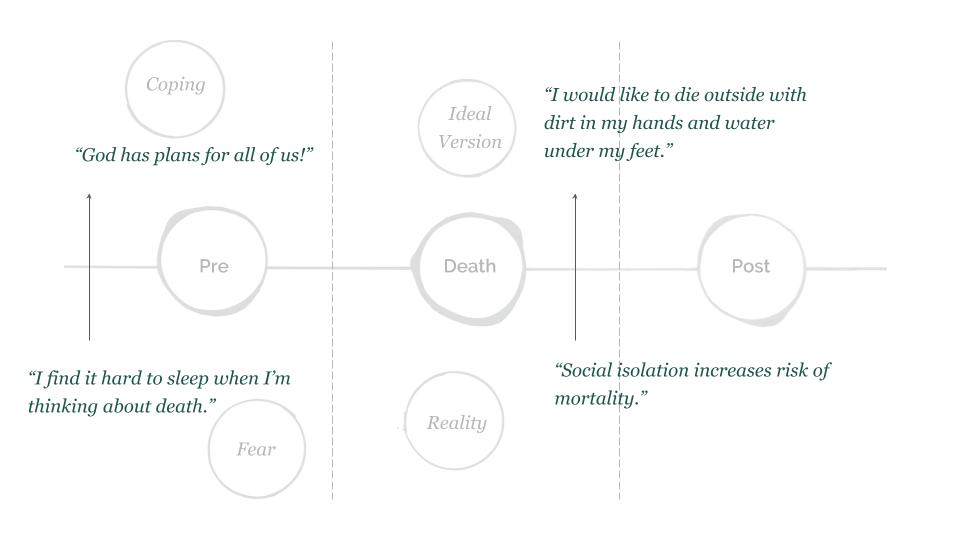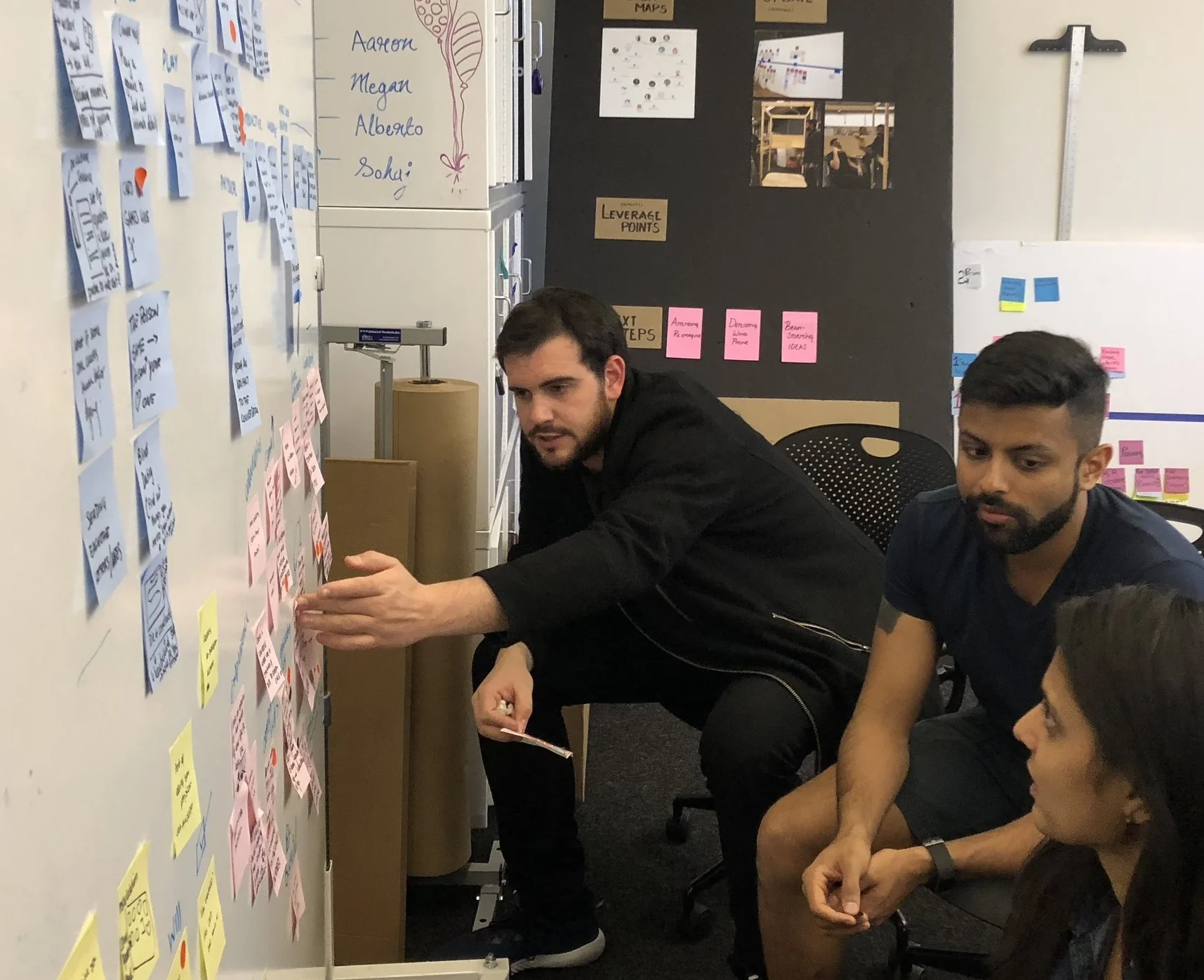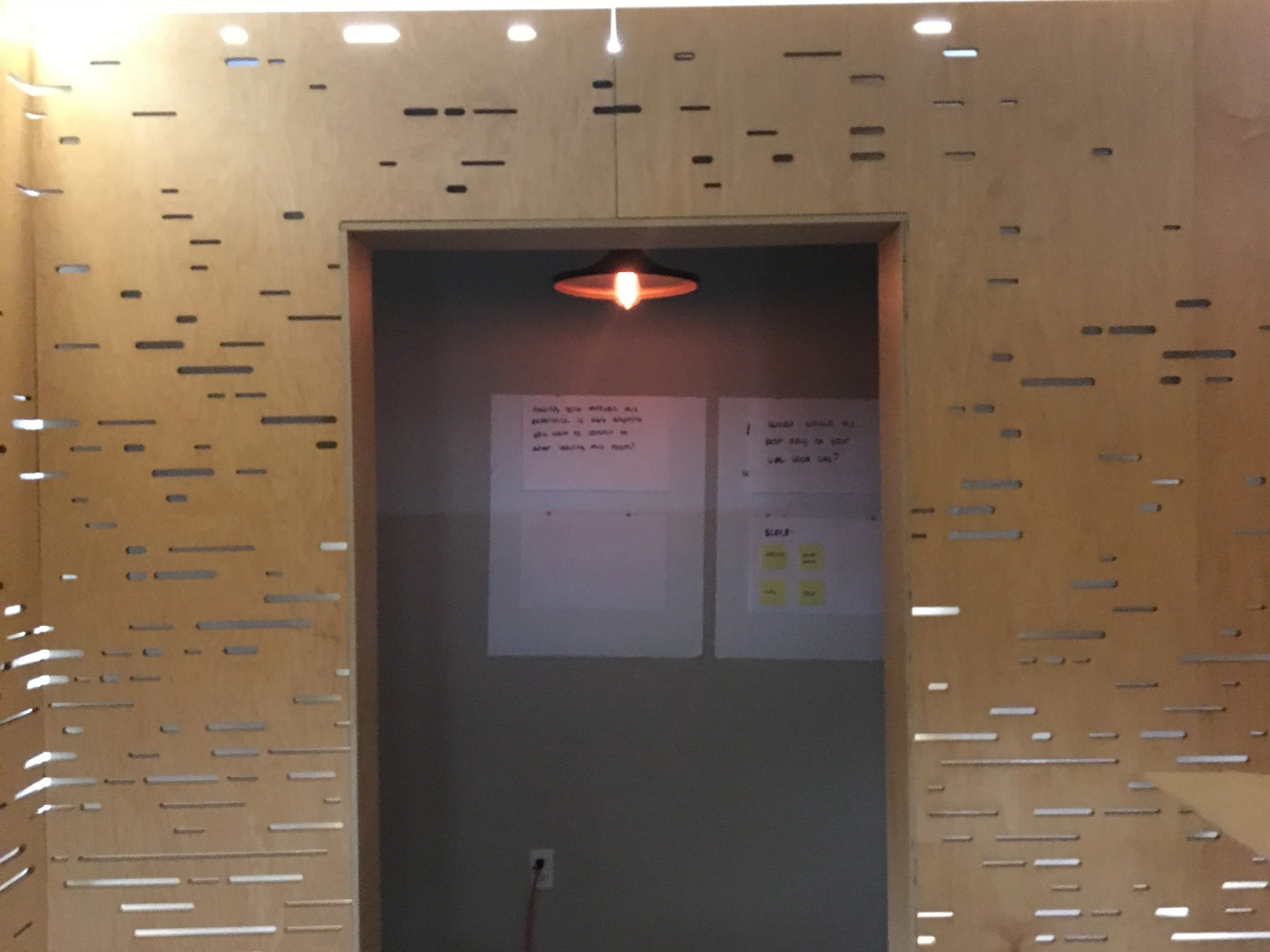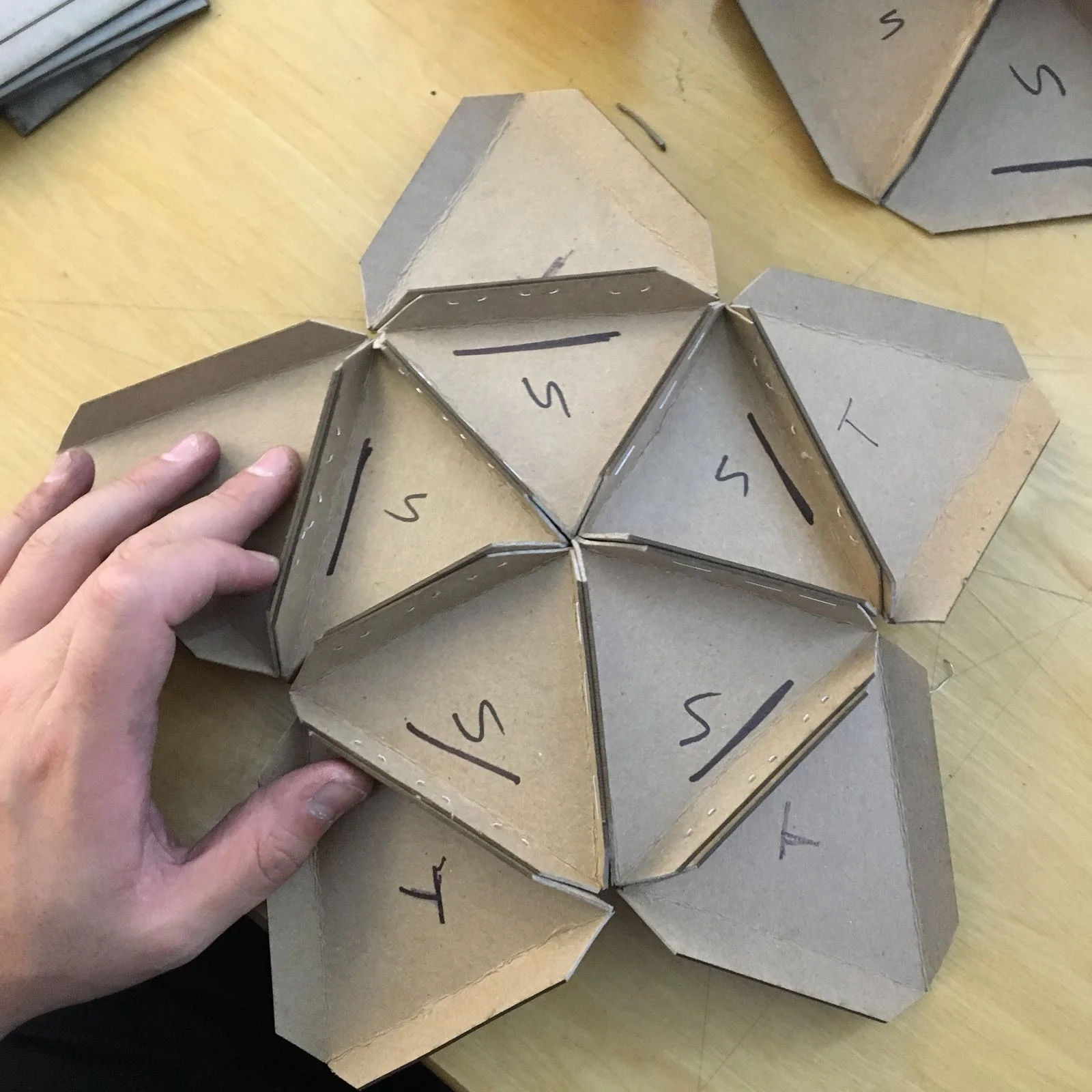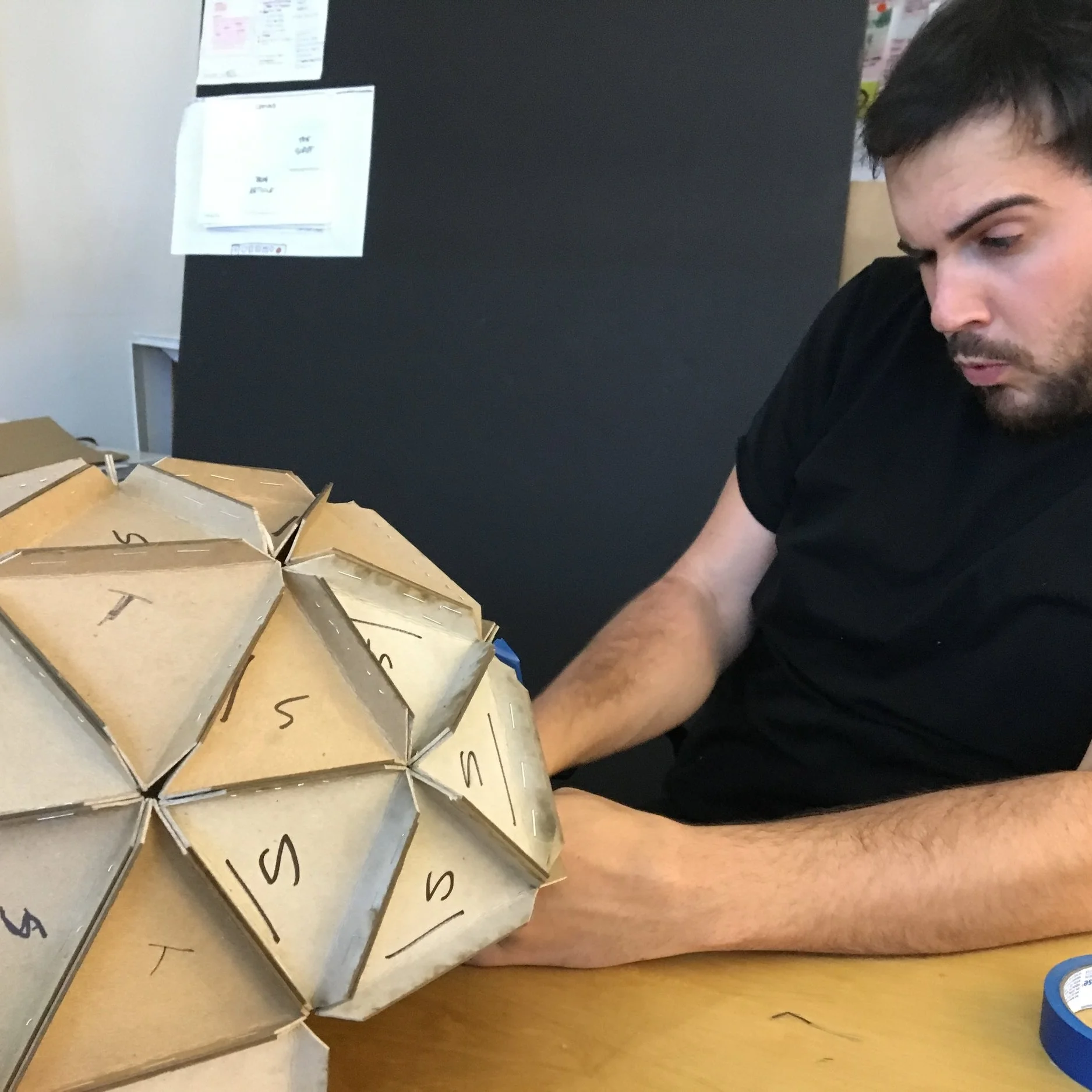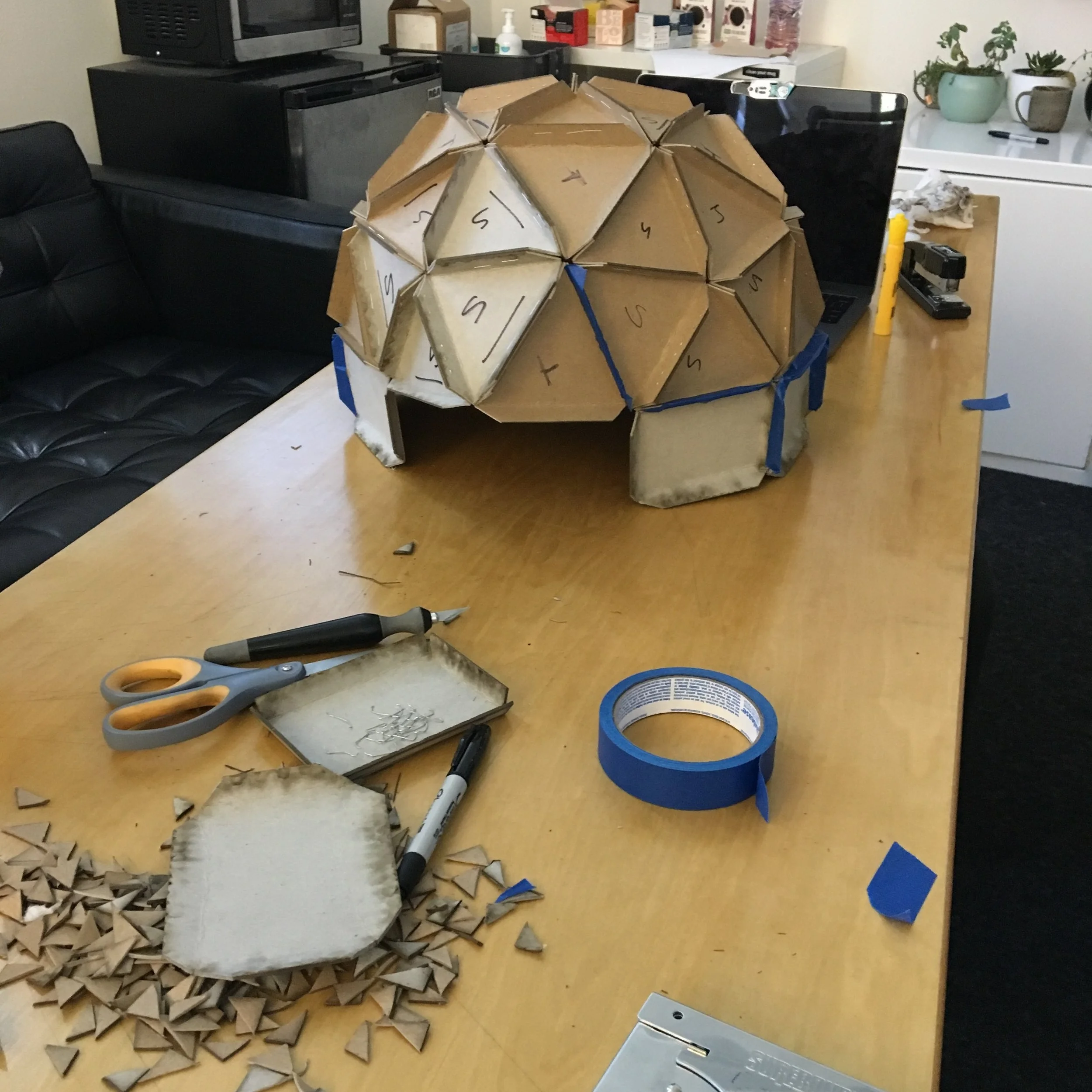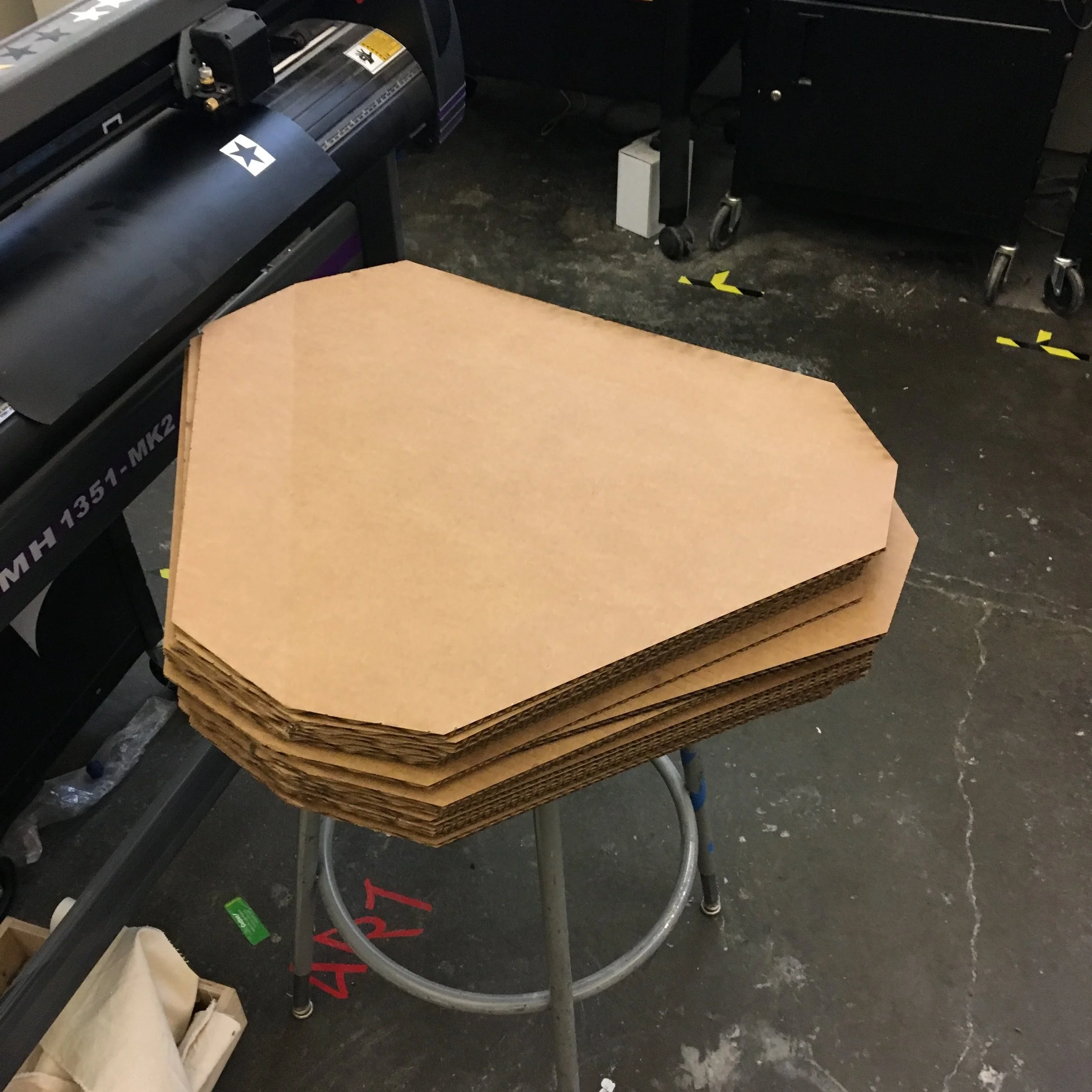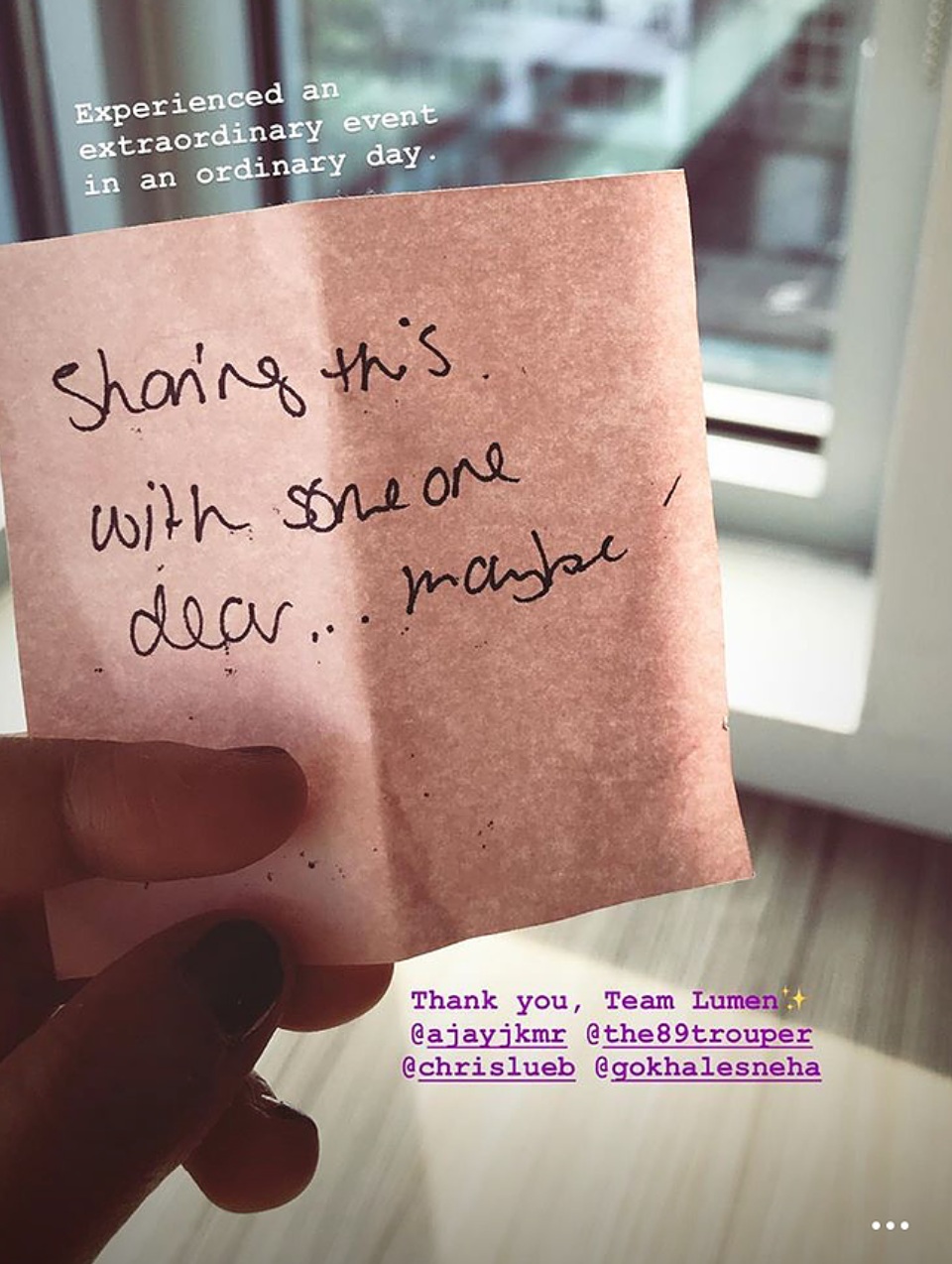Lumen
SOCIAL IMPACT | EXPERIENCE DESIGN
Project Highlights
Team & Mentor
Ajay Jayakumar, Sneha Gokhale, Chris Lueb, Dr. Dawn Gross
Project Advisors: Kristian Simsarian, Peter Coughlan, Charlotte Hochman, Marc O’Brien, Sarah Harrison
Initiative: Social Impact, Design Research, Systems Thinking, Prototyping, Usability Testing
Timeline: 4 Months Research, 4 Months Prototype
Location: San Francisco
Overview
I was originally drawn to the end of life space because it's an emotionally difficult topic that many people in modern society feel uneasy to speak about in the open. This eight-month case study captures what people from different age groups and cultural backgrounds have shared with us in regards to their understanding of the pre, during, and post-death phases.
The Outcome
An interactive and immersive experience that empowers people to think and talk about the end of life, either by themselves or with a loved one.







